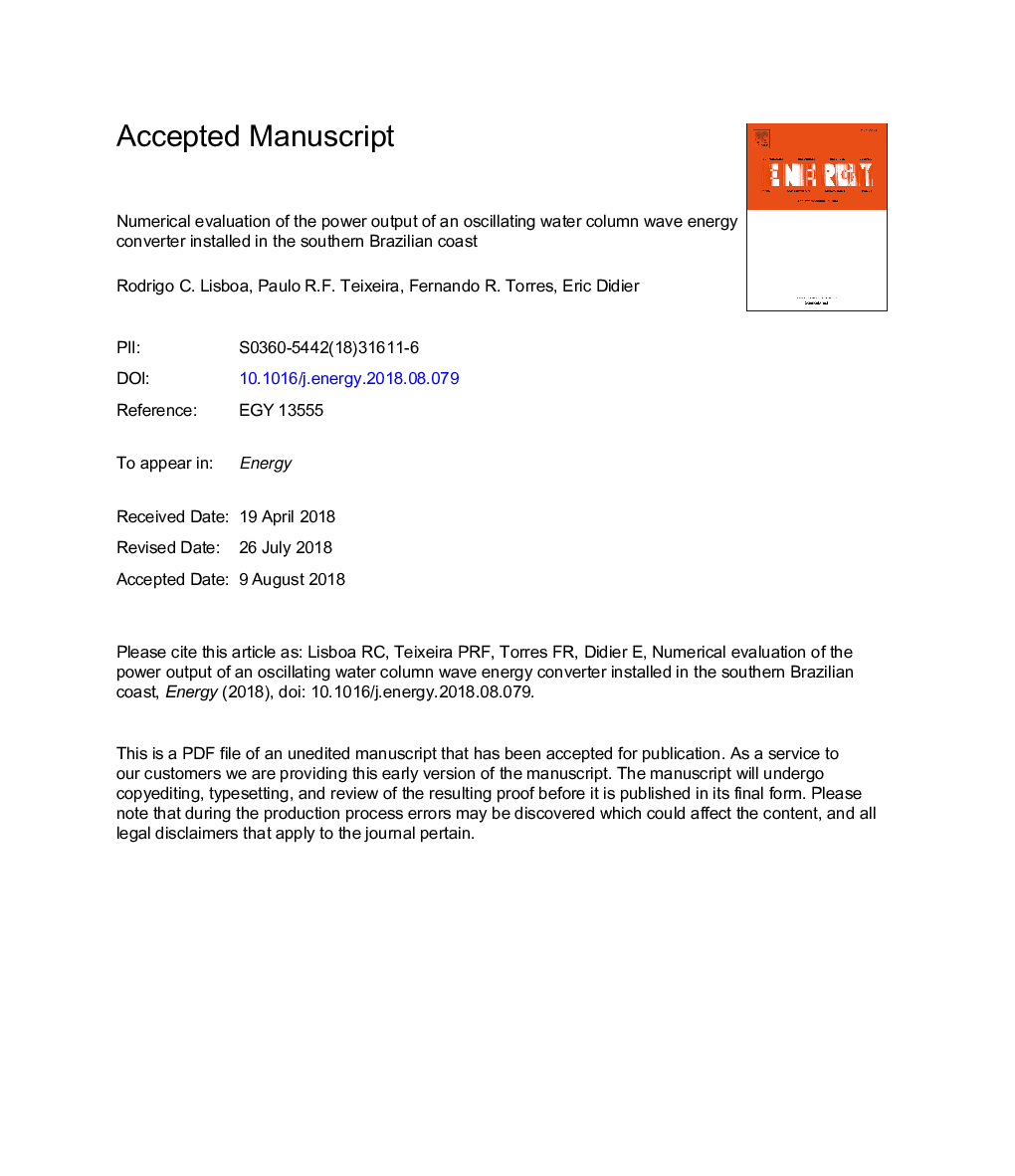| Article ID | Journal | Published Year | Pages | File Type |
|---|---|---|---|---|
| 11007373 | Energy | 2018 | 21 Pages |
Abstract
Although studies show high wave energy potential in several coastal regions around the world, its evaluation and detailed characterization are necessary to optimize its harvest. This study aims at numerically evaluating the power output of an Oscillating Water Column (OWC) wave energy converter installed in the southern Brazilian coast. The FLUENT® numerical model, based on the Reynolds Averaged Navier-Stokes (RANS) equations and the Volume of Fluid (VoF) technique, is used. The turbine diameter optimization (TDO) model, which considers the motion of the water surface inside the OWC chamber as a piston movement in response to the hydrodynamic forces from the incoming waves, is also employed. The OWC is equipped with a Wells turbine, with pressure control (relief valve) and regulation of the turbine rotational speed. The turbine diameter is chosen by taking into account the wave characteristics in the region where the device is installed. An OWC device 10â¯m wide, 10â¯m long, 16â¯m high (10â¯m submerged) with a front wall 2.5â¯m submerged reaches its optimum performance with an annual-averaged power output of 36.48â¯kW (efficiency of 54.6%), by using a turbine with 2.25â¯m diameter.
Related Topics
Physical Sciences and Engineering
Energy
Energy (General)
Authors
Rodrigo C. Lisboa, Paulo R.F. Teixeira, Fernando R. Torres, Eric Didier,
